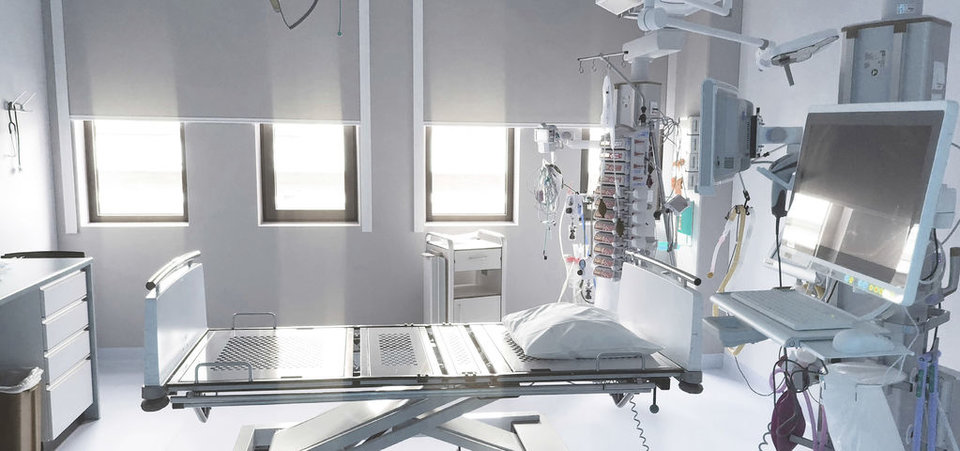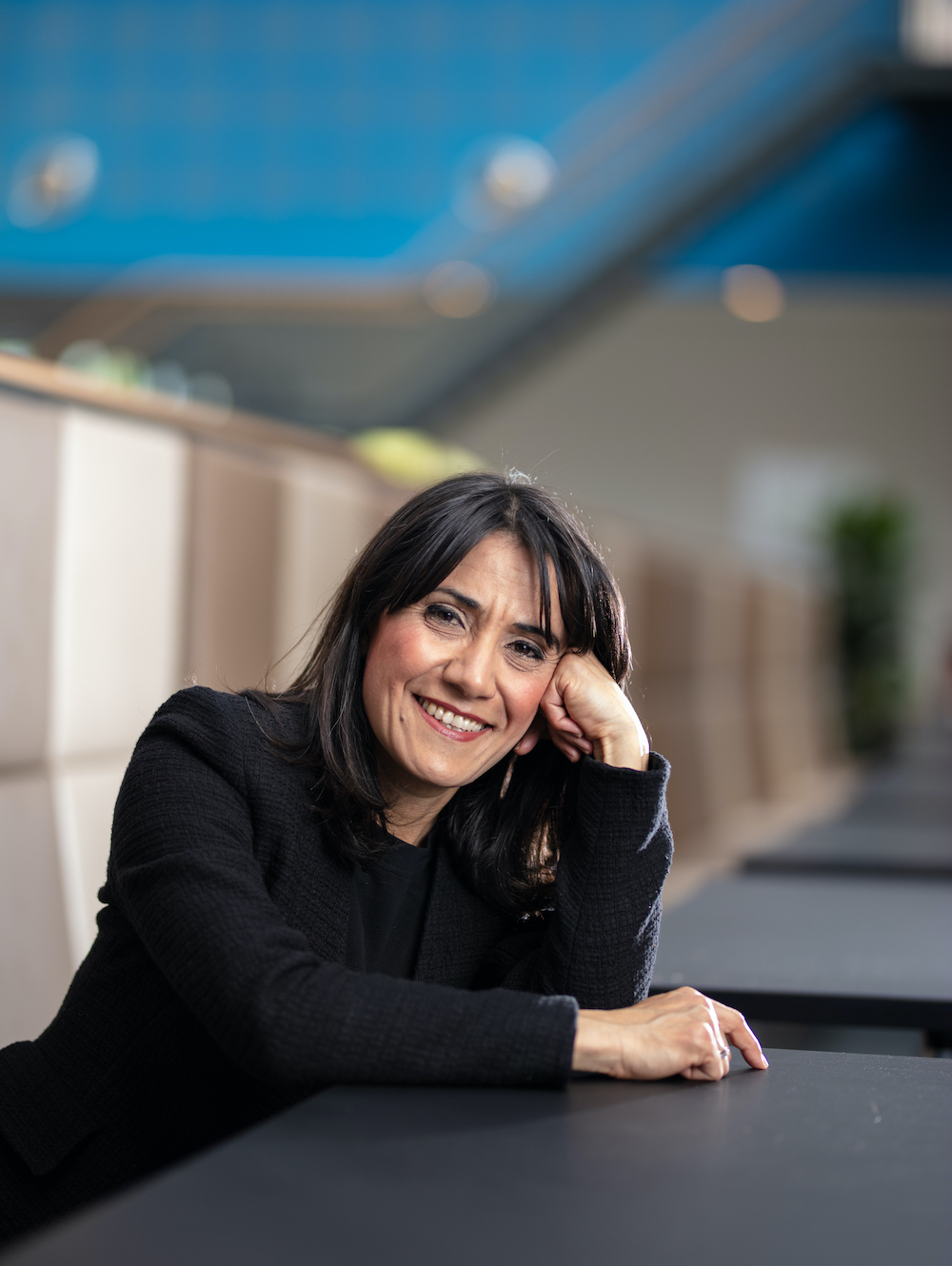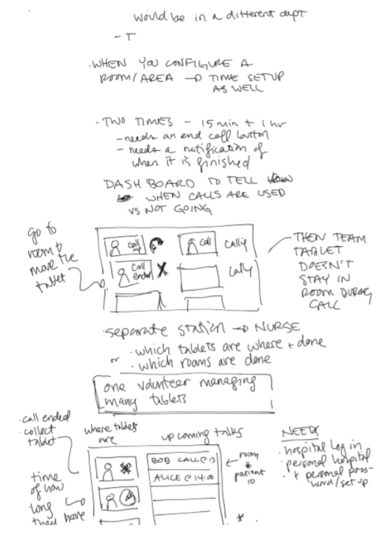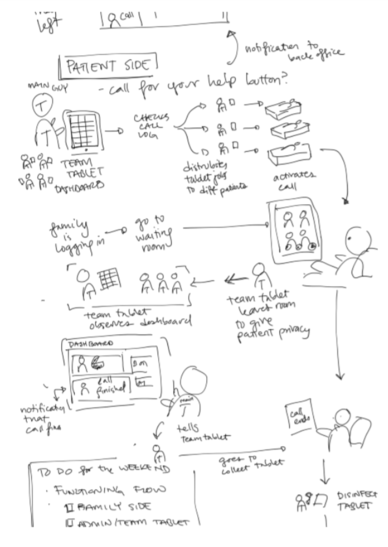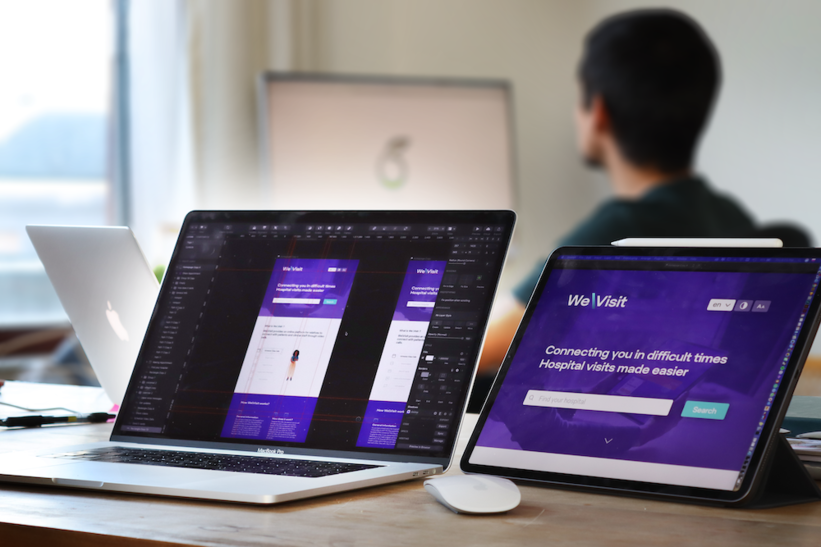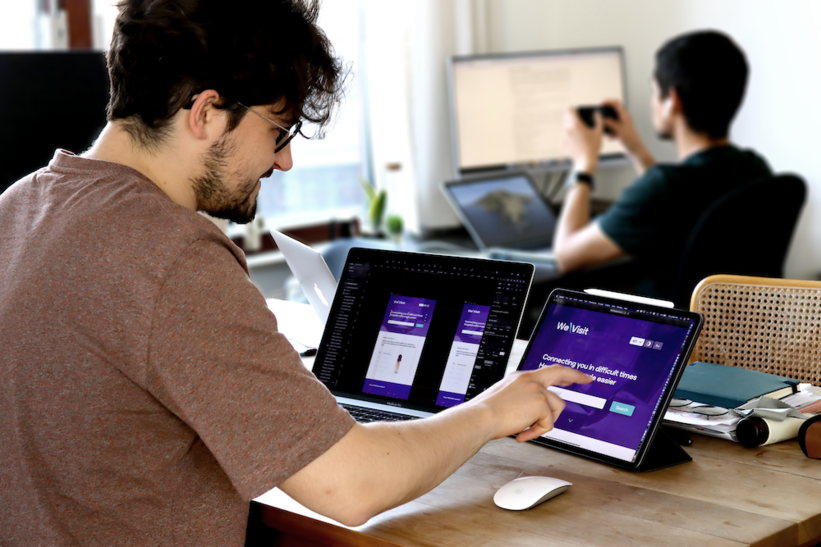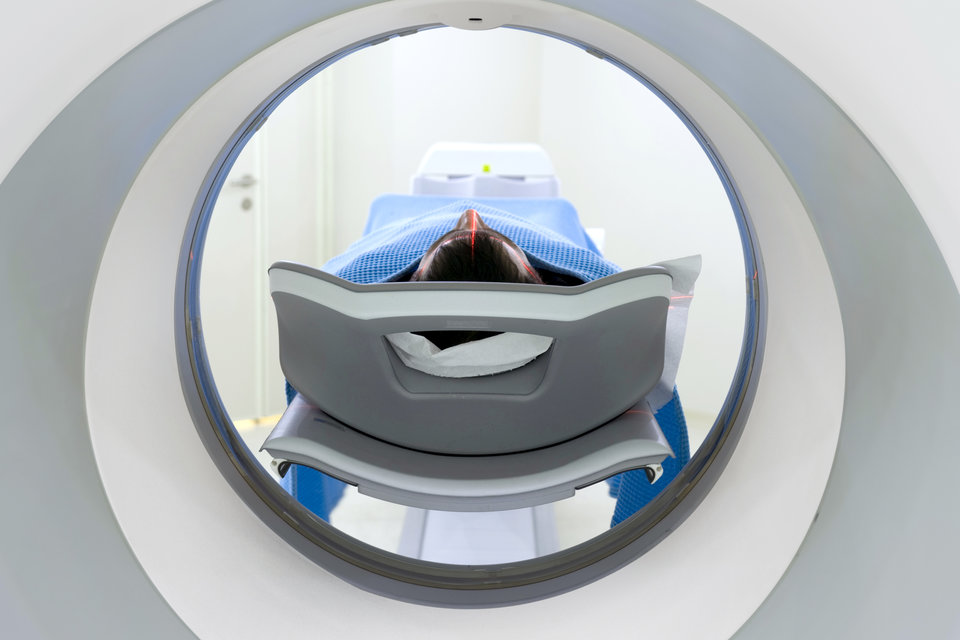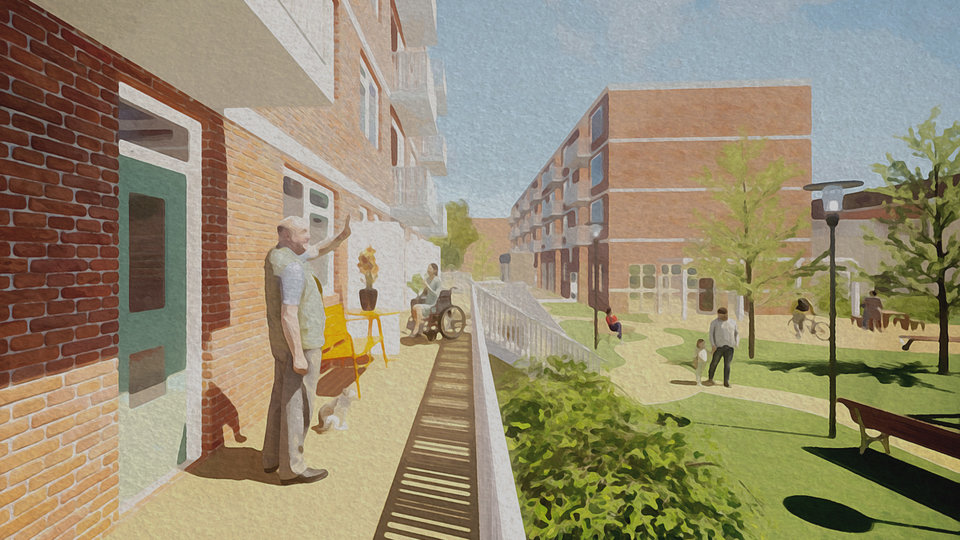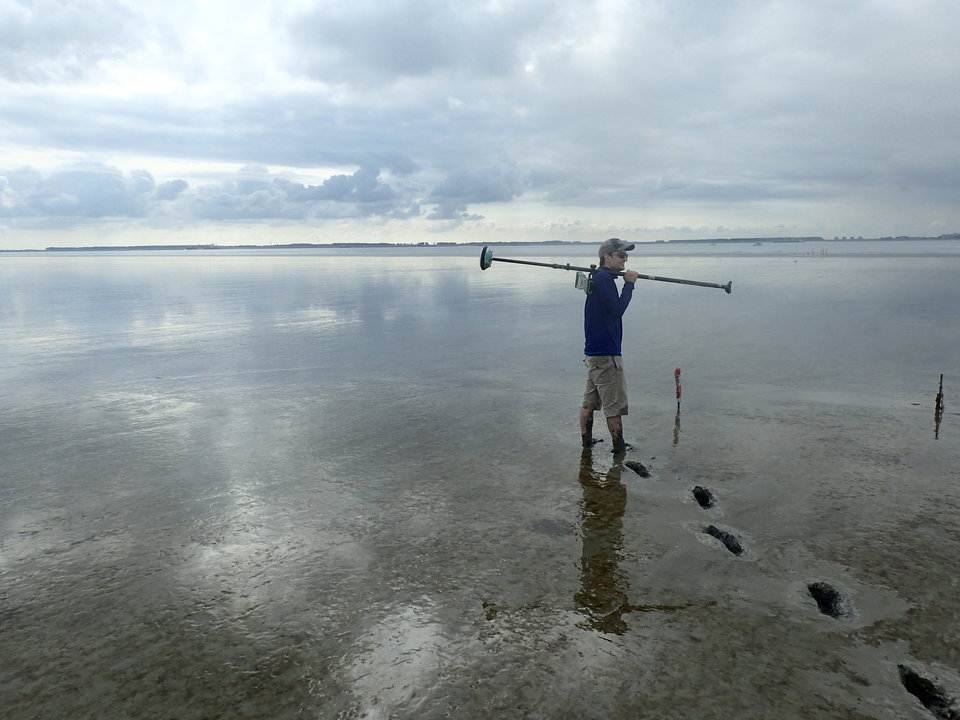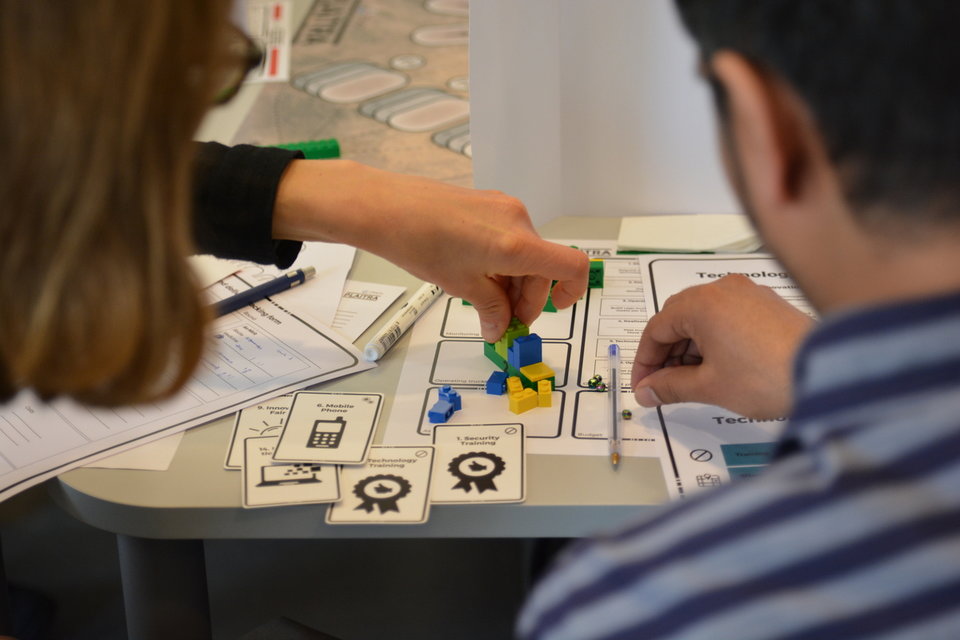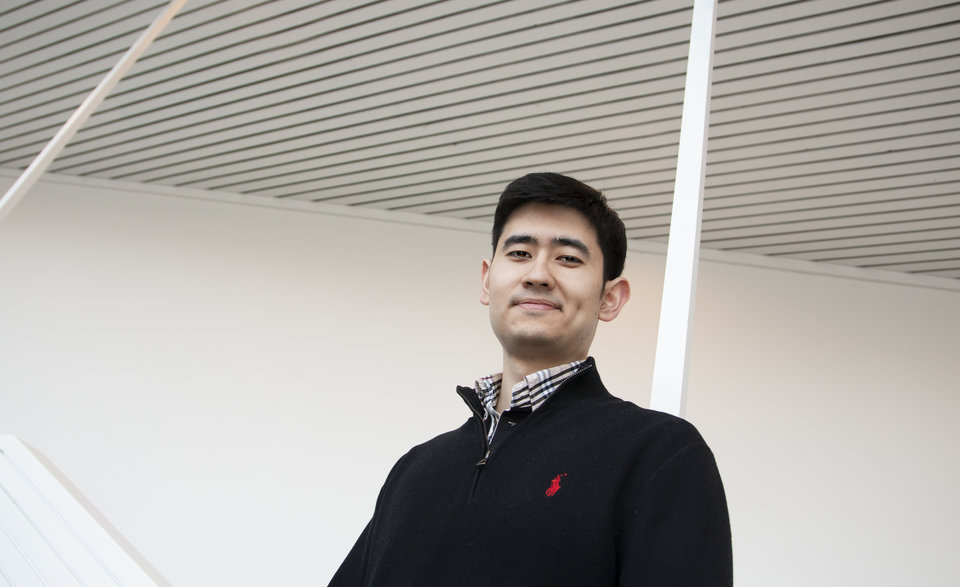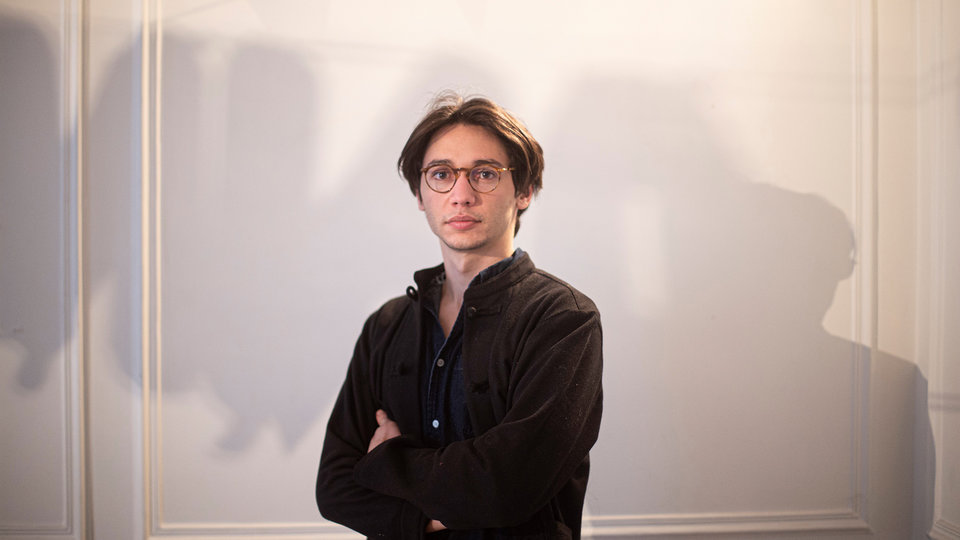Visiting a loved one who’s critically ill: normally that’s possible, but due to the coronavirus, visiting ICUs is no longer permitted. The result is a lonely fight behind closed doors. In an attempt to combat the loneliness, researchers at Delft University of Technology have come up with We\Visit: a tool that facilitates video-calling by appointment. And it was developed at lightning speed after the Reinier de Graaf hospital sounded the alarm.
It all began on a Friday afternoon, shortly after Dutch Prime Minister Rutte announced the ‘intelligent lockdown’. A researcher the university’s Faculty of Mechanical, Marine and Materials Engineering (3ME) forwarded an email to Elif Özcan Vieira. Elif, who works for the Faculty of Industrial Design Engineering (IDE) and whose research interests include alarm fatigue among medical personnel, opened the message and immediately felt the hairs of her arms stand on end. ‘It was a pretty emotional email’, Elif explains. ‘A cry for help. The Reinier de Graaf hospital said that it was in dire need of a communication tool for its ICU. The patients were not only suffering from the coronavirus, it said, but also from loneliness. That’s a heartrending combination, and I immediately felt that I had to get to work. The research experience I’d gained at various ICUs would certainly be useful, but I needed help; I needed technical knowledge to be able to develop such a tool.’
Interfaculty cross-fertilisation
A colleague put Elif in touch with Willem-Paul Brinkman. Working just 650 metres along the campus, Willem-Paul uses virtual technologies in his work combatting phobias and psychotic disorders at the faculty of Electrical Engineering, Mathematics and Computer Science (EEMCS). That very same weekend, he drummed up a number of fellow scientists, who attended a Zoom meeting with him and Elif the following Monday. One of them was Merijn Bruijnes, a psychologist specialising in the interaction between people and technology. Merijn: ‘The email from the Reinier de Graaf hospital created a stir, and immediately led to a brainstorming session. We soon came up with the idea of video-calling including a planning tool. But the question remained: who would we be making such a tool for?’
No mobile phones
In order to reach the right target group, the researchers contacted, among others, the FCIC – a Dutch foundation that promotes the interests of ICU patients and their loved ones. Elif: ‘ Often people admitted to intensive care don’t have access to a mobile phone. After all, they had to be rushed to hospital. And there’s also the fact that corona patients are often aged 65 or older.’ Merijn adds that many corona patients in the ICU are in an induced coma. ‘Some of the patients have been intubated and are attached to breathing apparatus. That looks very intimidating, but someone from the foundation explained that this doesn’t necessarily mean that people are no longer taking anything in. So how do you adapt your tool to that?’
Cybersecurity
The brainstorming session produced a very specific concept: in order to create a feeling of social contact and provide emotional support to loved ones, the scientists wanted to make an online video tool. On a number of points, this video tool would take up where FaceTime and WhatsApp left off. Not only can the tool be used easily by those aged over 65, for example, but protecting patients’ privacy is also an important element. ‘The Cybersecurity group put forward a number of students who did their best to hack the tool’s security protection. They reported their findings and then came up with solutions. That proved to be really helpful.’
Prototype
One week after the Monday afternoon session, the researchers had a prototype. Its name? We\Visit. And how does it work? Merijn explains: ‘The family’s contact person is given a code by the nursing staff. The patient’s family can use this code to log in to the We\Visit system to schedule a virtual appointment. When it’s time for the appointment, someone from the nursing staff – or a volunteer – takes a tablet to the patient to start the video connection at their bedside. As with Zoom, there is a virtual meeting space where people can talk to each another. The tricky thing is that you’re dealing with an ICU environment, which means that many things are not possible. In the beginning, we were still thinking really big, but we eventually came up with quite a simple design, developed by IDE student Marek Torbus and implemented by EEMCS students, all on a pro bono basis and in addition to their exams. In no time at all, my colleague Otto Visser (of the Distributed Systems Group) had ten students in his app saying they really wanted to work on this. It was incredibly special.’
Open science
The application used for video-calling, Jitsi, is a so-called open source application, which means that anyone can use it. And sharing is a method that fits perfectly with the We\Visit team’s approach. Elif: ‘At the moment, we’re seeing physical borders closing all over the world, and countries rapidly turning inwards to help themselves. With this open science approach, we want to transcend national borders. It isn’t just our virus, but everyone’s virus. Although we’re making a technical product, this is all about the need to solve a social problem. That’s why open science is so incredibly important during this corona crisis.’ This vision is endorsed by Merijn: ‘From the outset, we all agreed that everyone should be able to use our findings. At present, we’re running a We\Visit pilot at the Reinier de Graaf hospital, and we’ll soon be able to test a more finely tuned version at Rotterdam’s Erasmus Medical Centre. If we’re satisfied after the pilots, we want to release the software, so that any stakeholder from any organisation will only need to download a package of information. A ready-made package will soon be available on our website.’
Packages
Elif has first-hand evidence of the need for ready-made packages such as this. ‘Last week I spoke to one of my uncles, who is developing tests to detect hepatitis in a lab in Turkey. We discussed the current pandemic that’s setting the world ablaze. When I told him about We\Visit and the software packages that everyone would soon be able to use, he immediately said: “OK, let me know when it’s ready, because this has to come to Turkey.” We hope that soon, We\Visit will not only be used in hospitals, but also in care homes and nursing homes, both in the Netherlands and much further afield.’
Bringing a smile
Until then, however, there’s a lot of hard work to come. Elif: ‘We’ve received some funding from the TU Delft COVID-19 Response Fund, but we’ll soon need to think about long-term financing too. After all, we could do so much more with We\Visit. We could create a “message in the bottle” function, for example. We see that young children in particular can become extremely shy when faced with a camera. They would much rather sing a song for granny in a familiar context, or take the time to create a cheerful drawing. With a “message in the bottle” function, the family wouldn’t need to come together at the same time, but you could send different messages throughout the day. We\Visit would combine them and deliver them as a “message in a bottle”. But developing something like that will take time.’ Merijn: ‘In order to put all these great ideas into practice, we will indeed need a business plan. Our colleagues at the faculty of Technology, Policy and Management (TPM) might be able help us with that in due course. I do believe that it is going to work. When you see how willing everyone is to get involved, it’s really inspiring. For now, the key thing is to reduce the pressure on the ICUs. Doctors and nurses are currently working one exhausting shift after another, and until now there’s been little room for the human aspect. We hope that We\Visit will change that, and provide a reason for a smile without having to sacrifice anything – or anyone.’
Merijn Bruijnes is a psychologist and member of the Interactive Intelligence group at TU Delft. ‘When it comes to computer science, people often think of hardcore programming or machine learning, not psychology. It’s nevertheless the case that you can use psychological knowledge to make technology work more effectively. Take the example of making a system user-friendly. More and more organisations are working with chatbots or virtual assistants. By researching how people respond to digital interlocutors such as these, technology can be used to contribute to psychology.’ One good example of how psychology and technology can come together is the tool that Merijn developed for the Police Academy in Apeldoorn. He devised a virtual suspect that could be used by trainee police officers to practise various cross-examination techniques. In this way, there is no need for up-and-coming officers to exchange their textbooks for the interrogation room straight away; instead, this provides a great intermediary step. Merijn’s current research focuses on diabetes patients. ‘Often, we only consider the patient and the doctor, but that means we miss the bigger picture. That’s because patients also interact with a social environment. “How can I tell my daughter that she’s allowed to bake cookies, but I’m not allowed to eat them?” I’m therefore mainly looking at how you can improve this exchange between patients and their social environment.’
Elif Özcan-Vieira is the director of TU Delft’s Critical Alarms Lab (CAL), and is the Care Technology Lead at the Adult Intensive Care Department of Erasmus Medical Centre. In the article A beautiful alarm beside your hospital bed, Elif explains that a cacophony of sounds can cause alarm fatigue among medical personnel and anxiety in patients. In collaboration with the Erasmus MC, she aims to address the problem of noise pollution in ICUs with human-centered design solutions that rely on advanced technologies. During her student days in Ankara, when she studied Industrial Design, she fell in love with both radio and sound. ‘There’s a mysterious magic to sound: its shape, its apparent elusiveness, its direct effect on the immediate surroundings. As a sound designer at Radyo ODTÜ, which was then being run by students and has now grown to be a national station, I became fascinated by the tiny vibrations that we catch with our ears. In the years that followed, I began to learn more about product perception, human behaviour and psychological processes – and sound kept cropping up in that context, too.’
Cédric Willekens is studying computer science at TU Delft, and was introduced to the We\Visit project by Otto Visser. ‘Shortly after COVID-19 took hold in the Netherlands, I moved in with my girlfriend. We often talked about her grandmothers, and how to keep in touch with loved ones at a time of social distancing. When I heard Otto Visser talking about We\Visit, I immediately knew that it was a fantastic project and that I wanted to contribute. The great advantage is that, as a student assistant, I’ve been working on educational software projects for some time now. One of those projects is called Queue. Queue is a tool that you can use to schedule contact time with students; if there’s an oral exam coming up, for example. The basic idea of Queue is similar to that of We\Visit. At the outset, in very close cooperation with the Reinier de Graaf hospital, we tried to make an inventory of the needs. What do healthcare staff require? And what do family members at home want? Based on this input, we wrote the back-end – the part that’s not visible to the user. The industrial designers focus on the user interface and try to make the digital environment as user-friendly as possible. That includes asking questions like: what buttons does the device need? Which route will the user take? They make things intuitive, make sure there’s a sleek design, and form the link between us – the computer scientists who are responsible for the technical implementation – and users.’
The design of We\Visit, developed by IDE student Marek Torbus, is deliberately simple. Marek: ‘I was really interested in doing this project because of its current need. I talked to Elif about doing something to help and was lucky enough to join the team from the beginning. My main responsibility was to create a workflow and user interface for our service. The main requirements were to make the website accessible for different users, especially taking into account the elderly who have difficulties in dealing with technology or don’t have a smartphone which makes it very difficult for them to communicate with their family and friends when in the ICU. In order to fulfil this, the website has been designed with the minimal possible steps needed to connect families with the patients. And I also used for example very contrasting colours. The key to our success has been daily Zoom meetings where I had the opportunity to present work and receive immediate feedback from the team. I'm particularly honoured to be a part of We\Visit.’
More information
Carola Poleij – Press Officer– C.Poleij@tudelft.nl – 06 41 61 15 10
Dave Boomkens – Communications Advisor Faculty of Electrical Engineering, Mathematics & Computer Science – d.j.boomkens@tudelft.nl
Julia Candy – Communications Manager Faculty of Industrial Design Engineering – j.r.candy@tudelft.nl

